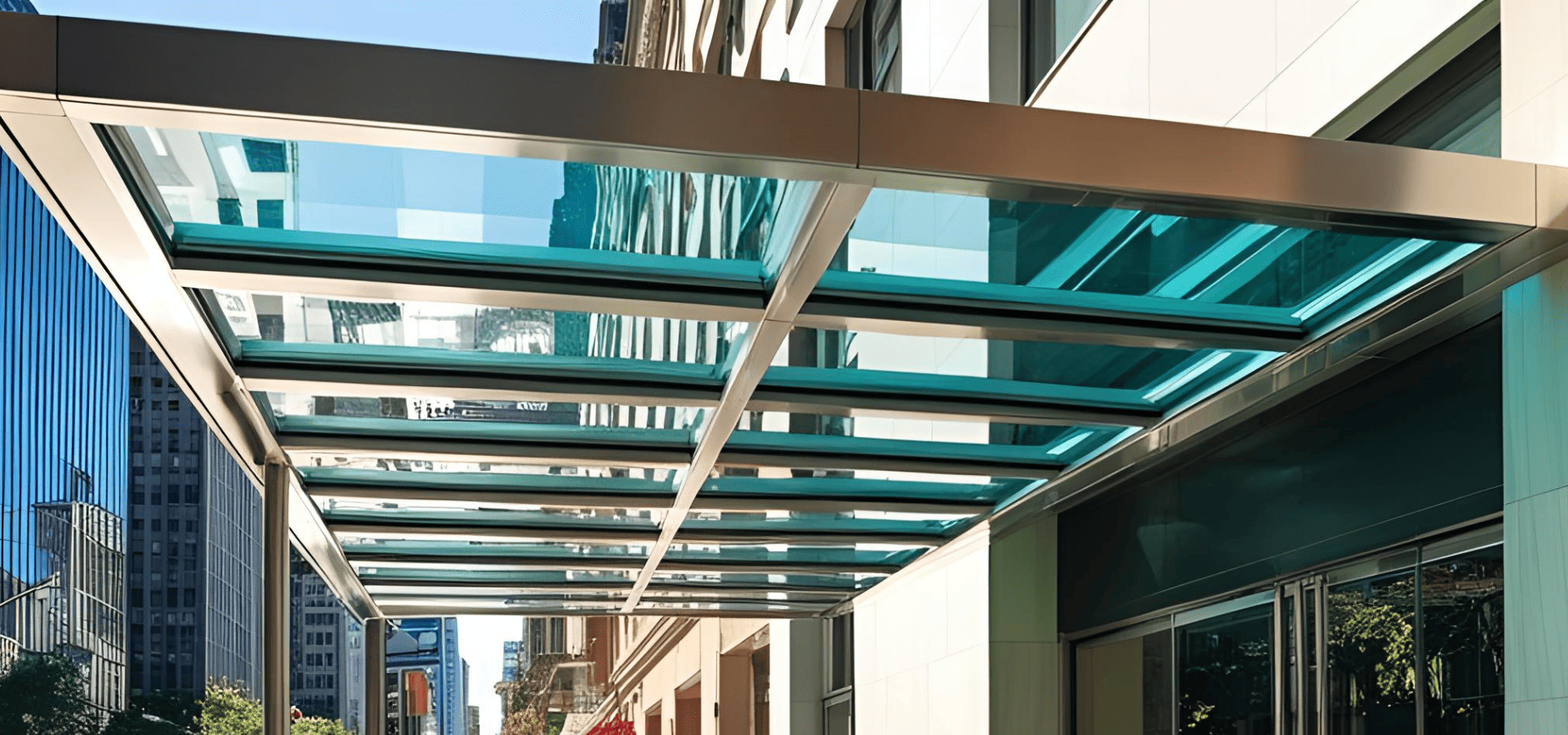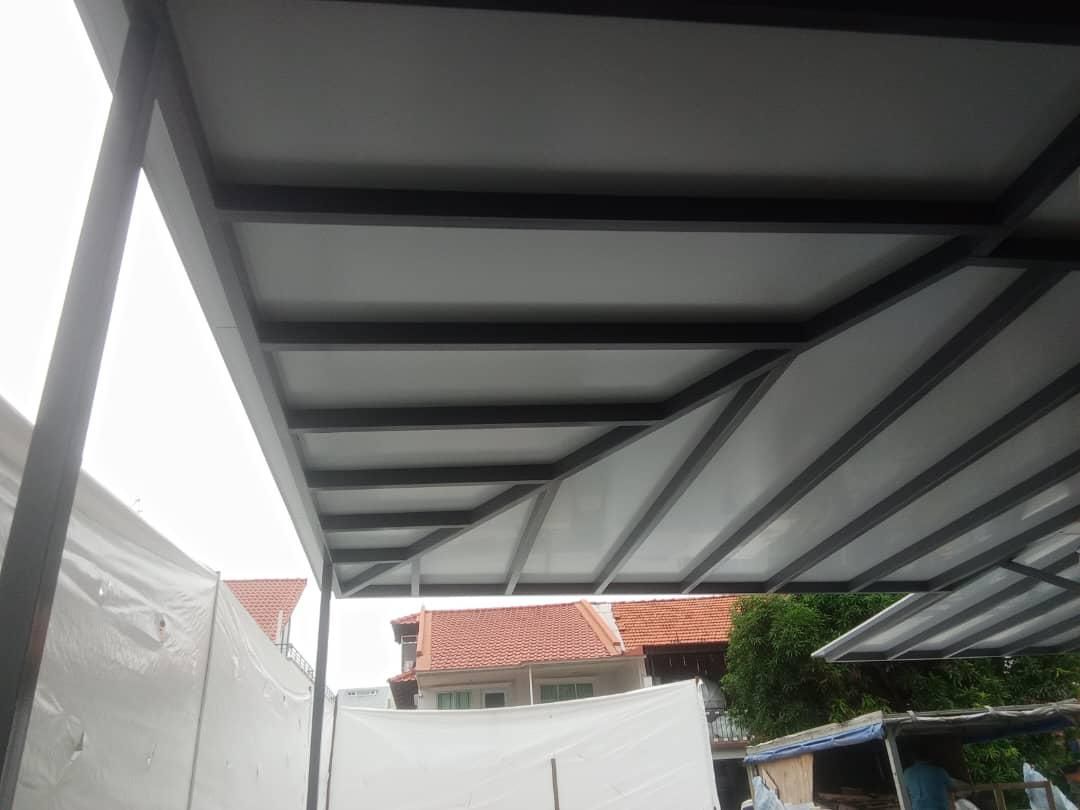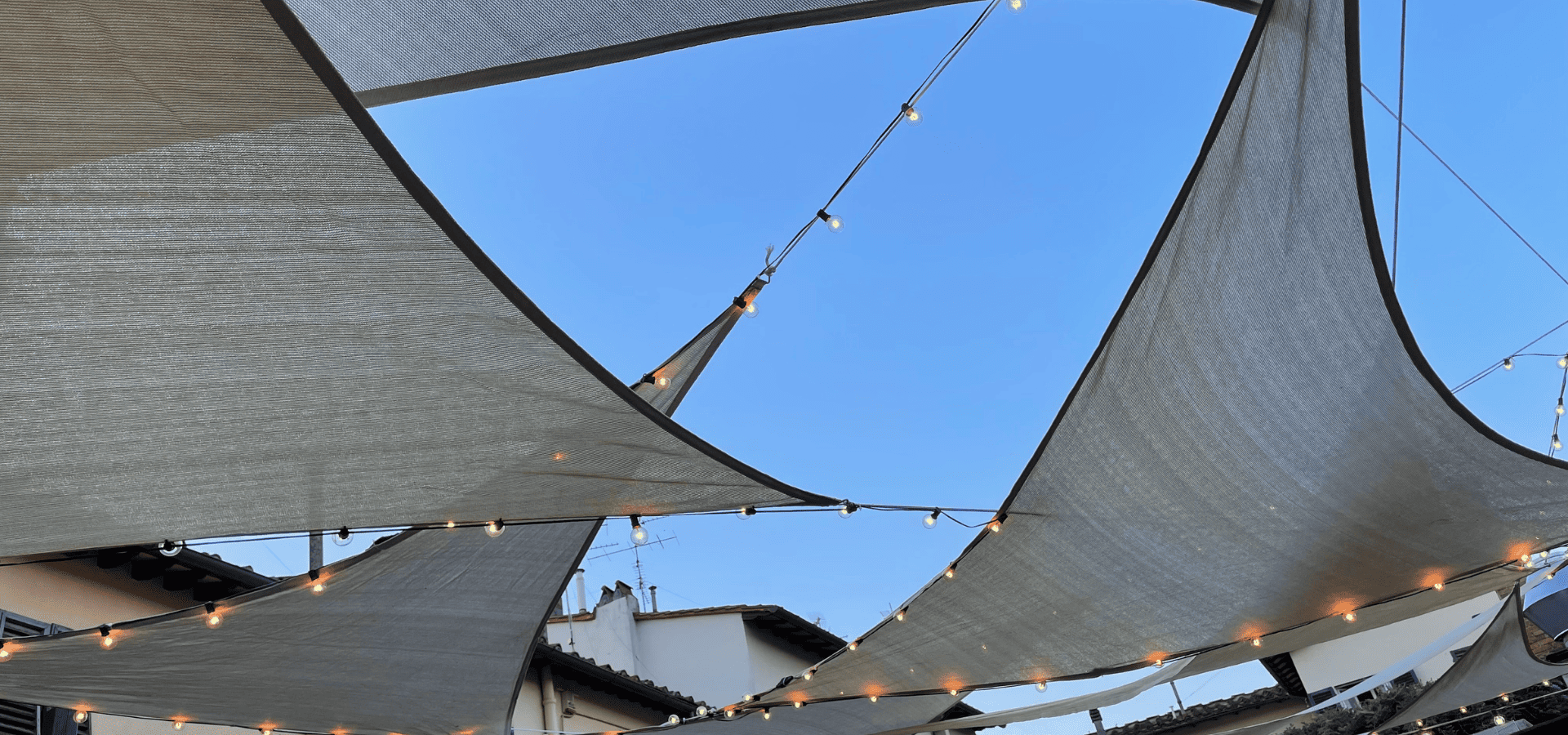What Are The Different Awning Types Available?
If you're looking to install awnings for your home or business, your first question is probably “What’s available?”.
Well, you're in the right place.
In this article, we're going to be covering the various awning types and materials that are available, so that you know exactly what your choices are.
Even if you're hiring an
awning contractor to install the awnings for you, it's still good to know your options so that you can choose your own awning rather than just blindly trusting your contractor’s recommendation.
It’ll also save you from potential issues like ending up with a material that requires more maintenance than you’d like or later on realizing that you’d rather have gone with another material.
Let’s begin.
Awning Materials
First off, we’ll be starting with the various awning materials available. Then, we’ll go over the types of mechanisms available, and finally, a couple of special awnings that you probably won’t use, but are worth knowing.
1. Fabric
This is a very commonly seen awning material and probably the first thing that pops up in most people’s minds when you mention awnings.
Fabric awnings can come in pretty much any color and design that you want since they’re literally just pieces of fabric.
This means you can have your business logo on it, stripes, or even a cartoon character if you wish.
Fabric awnings are also the only awning material that can be used for retractable awnings, which we’ll cover later on.
There are three different types of fabric awnings:
- Acrylic Fabric: Acrylic fabric awnings retain colors the best and will be able to retain the beauty of bold, vibrant colors. They’re also resistant to UV rays, so their color won’t fade easily even when exposed to harsh sunlight.
- Vinyl Fabric: Vinyl fabric awnings are also very durable, but they don’t retain colors as well, so their colors are usually less vibrant and a little more subdued. They usually have a smoother texture. Vinyl fabric awnings are quite tough and are the best type of fabric for humid or coastal climates due to their moisture and weather resistance. Acrylic fabric resists UV rays better, while vinyl resists moisture better.
- Polyester Fabric: Lastly, polyester awnings are the most affordable fabric. However, they’re also the least durable and don’t retain colors well. Still, if you’re on a tight budget, polyester fabric remains a great option that will perform adequately.
2. Glass

Glass is glass, so not much explanation needed there.
Glass awnings bring an element of sophistication, luxury, and elegance to a space. As such, they’re perfect for high-end and contemporary homes.
Everybody knows that glass is fragile, but nowadays, the glass used for awnings is usually laminated and tempered.
This makes the glass much stronger and in the unlikely event of breakage, the pieces will stay in one place rather than shattering everywhere.
So modern glass awnings are much tougher and safer than regular glass. Glass is naturally a very hard material, so glass awnings are also highly resistant to scratches.
For those worried about constant sunlight shining through, there are actually translucent and even opaque glass awnings.
As you’d expect from a material that looks so luxurious, glass is one of the most expensive materials for awnings.
This is because glass that’s used for awnings requires very precise engineering to follow strict safety standards, as it would be disastrous if the glass were to shatter or break on somebody. It also needs laminating and tempering, which add to the production cost.
On top of that, due to its weight and relative fragility, glass awning installation is harder and more complex than with many other materials, so installation costs are also higher.
The higher material and installation costs make glass awnings one of the most expensive awnings to install on the market. However, their unparalleled elegance and timeless aesthetic justify the price, especially if you’re someone who values aesthetics a lot.
3. Polycarbonate
Polycarbonate is a type of thermoplastic that can be made to be transparent, translucent, and even opaque.
Polycarbonate awnings resemble glass, but they’re much less fragile and much more impact-resistant since they’re a type of plastic.
Polycarbonate awnings are also cheaper than glass ones, as not only is the material cheaper to produce, but installation is easier too since polycarbonate is lighter than glass.
The catch is that polycarbonate, being plastic, still looks like plastic. It can mimic glass, but it’s usually pretty obvious that it’s plastic rather than glass, so you won’t get that sophisticated high-end look.
In addition, glass is one of the hardest materials, so it’s very resistant to scratches. On the other hand, plastic is actually relatively soft, so polycarbonate awnings can scratch easily, though manufacturers often have a layer of coating to help them resist scratches better.
All things considered, polycarbonate may not be as classy as glass, but it still looks great for modern homes and you won’t have to worry about them breaking easily, not to mention they’re cheaper too.
4. Aluminum Composite

Aluminum composite panels (ACP) are a type of sandwich panel where two aluminum sheets sandwich a non-aluminum core. The result is a lightweight and tough material.
ACP awnings are robust and able to resist denting, scratching, and harsh weather elements well.
They’re also one of the most affordable awning types. They bring a modern, somewhat industrial look to your space, making them very suitable for modern homes.
Their light weight also makes installation easier and thus cheaper.
Overall, ACP awnings may not look as high-end and elegant as glass and even polycarbonate. However, their affordability, durability, and practical modern aesthetic are making them an increasingly adopted awning material.
5. Metal
Lastly, metal awnings, as you’d expect, are tough and very long-lasting. They also bring a sleek, industrial vibe to your space.
Metal awnings can be a bit much visually for residential properties though, so they tend to be more often seen in businesses instead.
In terms of price, metal can be a little on the higher end, but its ultra-sleek aesthetic, low maintenance requirements, and robustness make it a worthwhile investment.
Some metals like steel will require a layer of protective coating to prevent rust, but as long as the coating is there, you won’t have to worry about corrosion or rust.
Awning Mechanisms
There are mainly two types of awning mechanisms–retractable and stationary.
Stationary Awnings
For stationary awnings, there isn’t much to explain. They’re basically fixed-shape awnings that remain in that shape permanently.
For stationary awnings, the main differences will be in the supporting structure. Heavier awnings may require wires and even pillars, while lighter awnings can be installed with no additional supporting structures.
Retractable Awnings

For retractable awnings, you’ll have much more flexibility. When the sun is up or it’s raining and you want shade, you can extend the awning.
When it’s nighttime and there’s no need for it anymore, you can retract it to take it out of the picture completely.
As we mentioned earlier, fabric is the only material that can be used for retractable awnings, so you won’t be able to get super sleek aesthetics like you could with a glass awning.
Still, it’s a necessary tradeoff for the flexibility that you get.
In terms of the operating mechanism, there are manual and motorized systems.
Manual systems will of course be cheaper, but they require more effort to retract and extend.
Motorized systems are much more effortless to operate, but they also cost more to install and maintain. With more moving parts, there’s also more potential for things to go wrong.
Special Awning Types
Now, we’ll be going over some special types of awnings. They’re very different from conventional awnings but have their purposes, though you probably won’t be using them for your space.
Portable/Pop-Up Awnings
Portable and pop-up awnings are exactly as they sound. They’re like tents, where you bring them to the location where you need shelter and set them up.
When you’re done, you can easily deconstruct them for future use.
Portable and pop-up awnings are great for events and recreational vehicles, but homeowners and business owners will probably not be too keen on using them for their space since there are more stable, permanent, and more aesthetically pleasing options available.
Shade Sails

Shade sails are pretty much a piece of fabric that you tie to various points to keep it up and allow it to serve as shelter.
They’re much cheaper than installing any traditional awning and can be set up very quickly and easily. They can also cover a very large area, even larger than with traditional awnings since it’s you can make the fabric any size you want and you just need to tie it up.
The catch is obviously that they don’t look as sleek as traditional awnings and don’t provide shelter very well. They’re mainly good for blocking out the sun and some rain, but you wouldn’t want to rely on them to block out heavy storms, and they won’t last very long.
Conclusion
Now that you know what your awning options are, you’ll be able to decide for yourself which is best for your home rather than just relying on others’ recommendations.
Whatever material you choose though, it’s important to make sure that your contractor or you are using high-quality materials. Otherwise, it may not stand up to the elements very well and you might need to replace them sooner than you should.
All the best!


SERVICES
Stationary Awnings
Retractable Awnings
Laminated Glass Awnings
Polycarbonate Awnings
Commercial Awnings
Sunshades/Ziptrak Blinds
Renovation Works
LOCATION
CONTACT
Uni Shades
4023 Ang Mo Kio Industrial Park 1, #01-335, Singapore 569634
Email: sales@unishades.com.sg
All Rights Reserved | Uni Shades